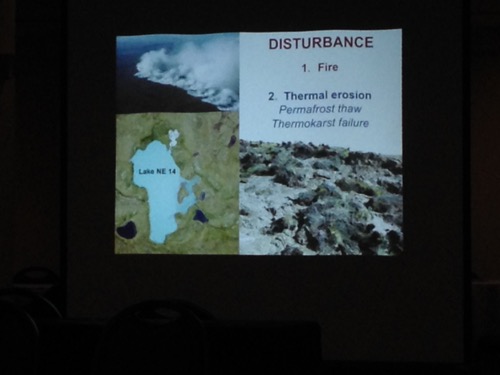Day two of PolarTREC orientation was dedicated to science overviews, program requirements, evaluations, outreach strategies, and technology lessons.
Even though I am headed to Antarctica, I was most enthused and interested in hearing about the variety of scientific projects exploring many different aspects of our world at its extreme northern latitudes. Mike Weintraub, a professor at University of Toledo studying carbon cycling in the high arctic, joined us virtually to give an overview of arctic science initiatives. Professor Weintraub is an excellent communicator, deftly weaving together explanations of the potential tradeoffs between releases of trapped carbon in thawing permafrost and the potential increase in soil nutrient availability for plant growth. On the one hand, thawing arctic soils and the biological decomposition that follows could potentially release billions of tons of carbon dioxide and methane into our atmosphere, increasing greenhouse gas concentrations and accelerating global climate change. On the other hand, more nitrogen available in the thawing permafrost could allow plants to grow more rapidly, removing carbon dioxide from the air to build their bodies and tempering climate change in the process.
 PolarTREC teachers listening to presentations by program staff.
PolarTREC teachers listening to presentations by program staff.
Wherever the balance between the two processes lies (Professor Weintraub is working on this), in a warming world, the fate of vulnerable carbon sequestered in arctic permafrost will have major implications for people all over the planet.
 A slide from Dr. Michael Weintraub's presentation to PolarTREC teachers
A slide from Dr. Michael Weintraub's presentation to PolarTREC teachers
Did you know: there is twice the total amount of carbon locked in arctic soils as is currently found in the entire atmosphere?


Comments